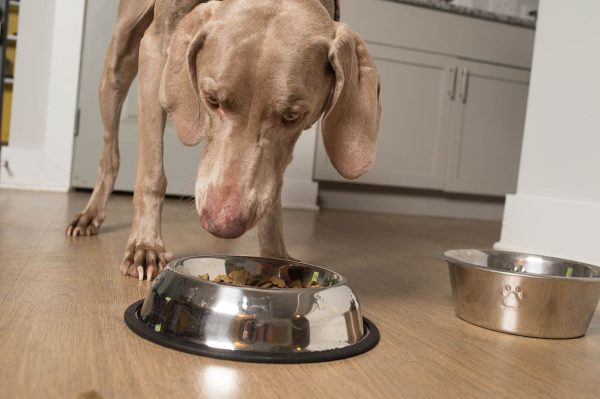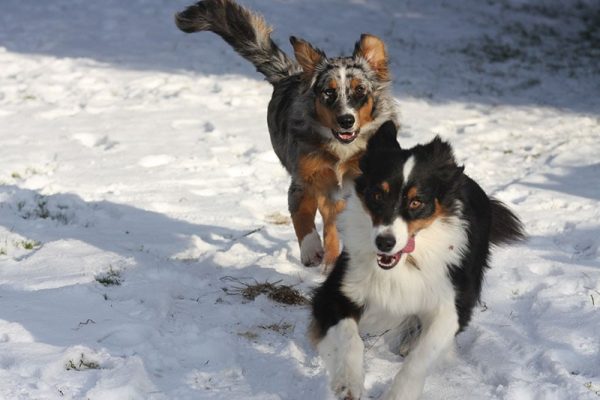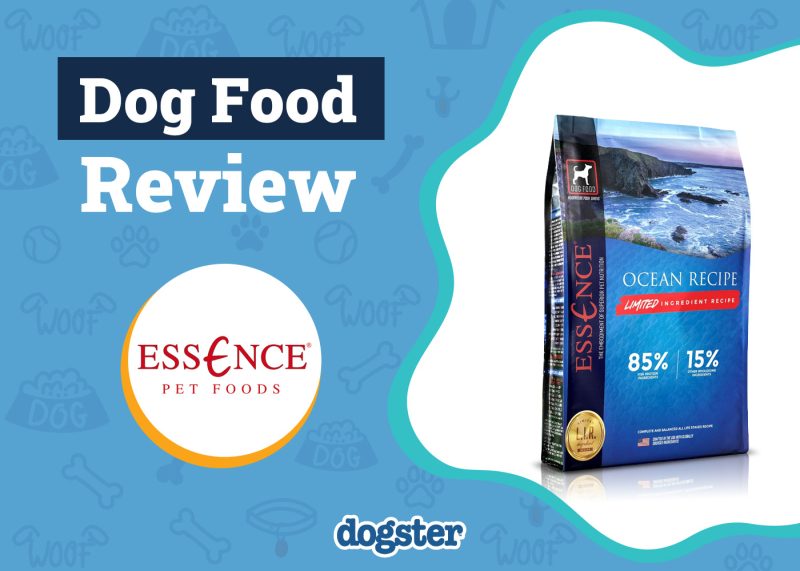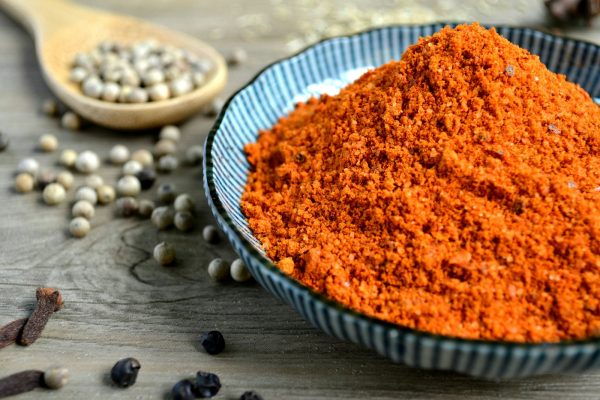In this article
View 3 More +The American Eskimo is known to be one of the most trainable breeds. In the early 1900s, they traveled and performed for the circus. Even now, they are highly intelligent with a touch of stubbornness. They are affectionate and loyal and make great companions for any family looking for a small dog to love.
Pomeranians have large personalities disguised in small bodies, and you will learn that about them quickly. They are extroverted, intelligent, and lovable lapdogs that love meeting new people and animals.
Both breeds descended from Spitz dogs and have an interesting history. They are similar in some ways and quite different in others. If you are considering adopting one of these sweet toy breeds into your family, read on to discover which one may be right for you.

Visual Differences

At a Glance
- Average height (adult): 9–19 inches
- Average weight (adult): 18–35 pounds
- Lifespan: 13–15 years
- Exercise: 1+ hours a day
- Grooming needs: Moderate
- Family-friendly: Yes
- Other pet-friendly: Yes
- Trainability: Highly intelligent, known as one of the most trainable breeds
- Average height (adult): 6–7 inches
- Average weight (adult): 3–7 pounds
- Lifespan: 12–6 years
- Exercise: 30 min+ a day
- Grooming needs: Moderate
- Family-friendly: Yes
- Other pet-friendly: Yes
- Trainability: Intelligent, alert, easy to train

American Eskimo Overview
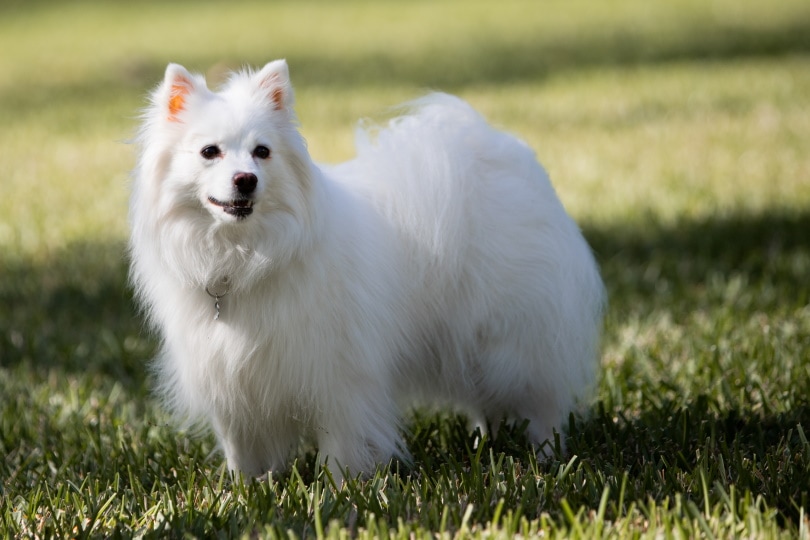
Temperament
The American Eskimo is a charming small breed full of energy and personality. They are affectionate, loving, and gentle and can make a wonderful companion for a big, busy family. American Eskimos were once circus dogs, so they will love a busy household and being the center of attention. They are highly intelligent and high-spirited, making them easy and willing to train and learn new tricks. This breed is devoted and loyal, and while they are not shy, they may be a little reserved when making new friends.
Training and Exercise
American Eskimos are active dogs with loads of energy. They will require a lot of exercise and mental challenges to stimulate their intelligent minds. They need a walk every day to burn off some energy, but an interactive game with their owner will be highly beneficial too. They are quick and curious, and if not exercised enough, they may end up entertaining themselves by digging or chewing.
Early socialization and training are highly recommended, but your time training your Eskie will be gratifying, as they have a reputation for being one of the easiest dogs to train.

Health & Care
American Eskimos are generally healthy, with a long lifespan of 13–15 years. While they can generally live a healthy life without too many issues, they are predisposed to certain issues that any owner should be aware of.
- Hip Dysplasia: Hip dysplasia is a common condition that occurs during the growth stage in dogs. It occurs when the hip joint loosens and the cartilage and bone wear down, causing pain, limited mobility, and dysfunction, which can potentially lead to arthritis.
- Patella Luxation: Patella luxation is also known as a dislocated kneecap and occurs when the kneecap luxates sideways, away from its normal position.
- Diabetes: Diabetes is an endocrine system disease that occurs in dogs when the body fails to produce or respond to insulin.
Nutrition
Like all dogs, the American Eskimo needs a high-quality, well-balanced diet. Based on the dog’s usual weight and activity level, a diet of ½–2 cups of premium dry food divided into two meals per day is recommended. When being trained, the breed responds well to rewards.
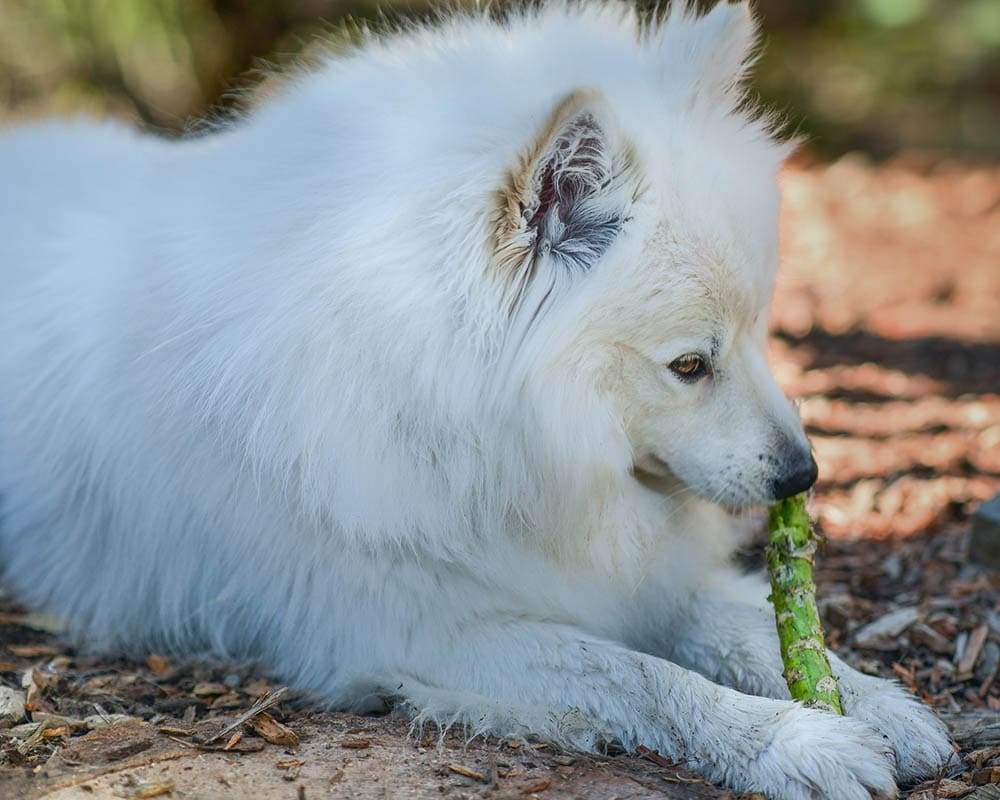
Grooming
The gorgeous fluffy coat of an American Eskimo may look like a lot of work, but it only needs a moderate amount of grooming. However, these dogs do shed a lot and will require brushing two to three times a week. Eskies only need to be bathed once every few months or when needed.
Daily teeth brushing, regular nail trims, and ear checks are also recommended.
Suitable For:
American Eskimos are suitable for a big family with kids. They are high in energy, so older children may be more suitable, but they will require a lot of attention, so a family that is always on the go is not ideal. Although they are active, they enjoy being indoors with their families, so they are suited for apartment living as long as they are taken for walks and challenged with games.
Eskies are highly intelligent, so they need an owner who can put the time in for training, learning new tricks, and playing challenging games. Overall, a household with a big, busy family that provides a lot of attention is where an American Eskimo will thrive.
- Easy to train
- Affectionate
- Loving
- Gentle
- Easy to groom
- High energy

Pomeranian Overview
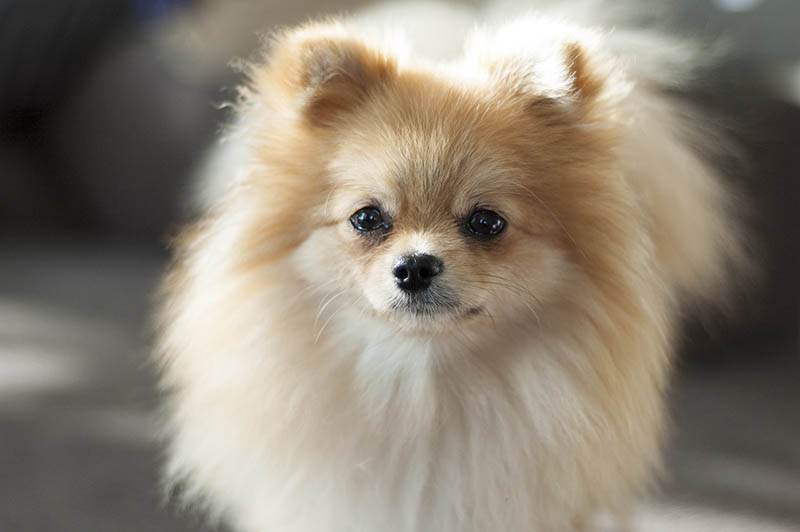
Temperament
The tiny Pomeranian packs in a large personality and a lot of brains. They are cute and feisty, and although they’re small, they don’t always act accordingly and may even challenge a larger dog. The loyal Pom is not afraid to be a watchdog either, which means they will bark more than you may like. These dogs are confident, independent, and curious, and although their appearance portrays adorable and sweet, they typically have a mind of their own. Having said that, they are still affectionate lapdogs that love time with their owner.
Training and Exercise
As much as Pomeranians enjoy being lapdogs, they are energetic and require daily exercise. They benefit from taking a walk in the park, running around the backyard, and playing interactive games with their owner.
Early training and socialization are essential to ensure your Pom grows up well-adapted. If your dog is not properly socialized and trained, it can lead to hyperactivity, separation anxiety, nipping, and excessive barking.
Pomeranians enjoy mentally stimulating activities and excel in obedience, rally, and agility sports. They respond well to clicker training and are often trained as therapy dogs. The downside is that Poms can sometimes be trickier to housetrain, so patience and consistency are needed.

Health & Care
Like all dogs, Pomeranians are prone to a few health concerns, even though they can live long, happy lives of up to 16 years. When considering a Pom as a pet, it is crucial to be aware of the health issues that they are prone to so you can be prepared and manage their health the best you can. Like the American Eskimo, the Pomeranian is predisposed to hip dysplasia, patella luxation, and other health issues.
- Dry Eye: Dry eye occurs when the tear ducts don’t produce enough tears, causing irritation and potential damage to the cornea.
- Hypoglycemia: A Pomeranian develops hypoglycemia when their blood sugar suddenly drops, either because they’re not being fed enough or because they are being fed a low-quality diet. It is a common condition for small dogs under the age of 3 months.
- Legg-Calve-Perthes Disease: This hereditary condition affects the hip joint and the head of the femur. When the head of the femur loses blood, it shrinks and leads to necrosis. The cause of this condition is still unknown.
- Cataracts: Cataracts is the clouding of the eye lens. Surgical intervention is currently the only treatment option, but it’s a progressive disease that will worsen over time without treatment.
- Distichiasis: Distichiasis occurs when one or more rows of eyelashes grow abnormally into the eye, causing irritation and discomfort. It can eventually lead to corneal ulcers if it is left untreated.
- Collapsing Trachea: A collapsed trachea is a condition where the tracheal rings become too flexible and collapse and flatten when the dog pulls air into their lungs. It occurs predominantly in small dogs and can be distinguished by a goose-like honk when coughing.
Nutrition
Pomeranians need to be fed a high-quality, well-balanced diet because they are prone to hypoglycemia. When choosing a nutritionally sound food for your pup, a brand approved by the Association of American Feed Control Officials is a good option.
Pomeranians have a high metabolism, so it’s best to feed them two to three small meals a day. They can also battle joint and skin issues, so a joint supplement and added omega-3 fatty acids may be beneficial. Always speak to your vet before adding a supplement to their diet.
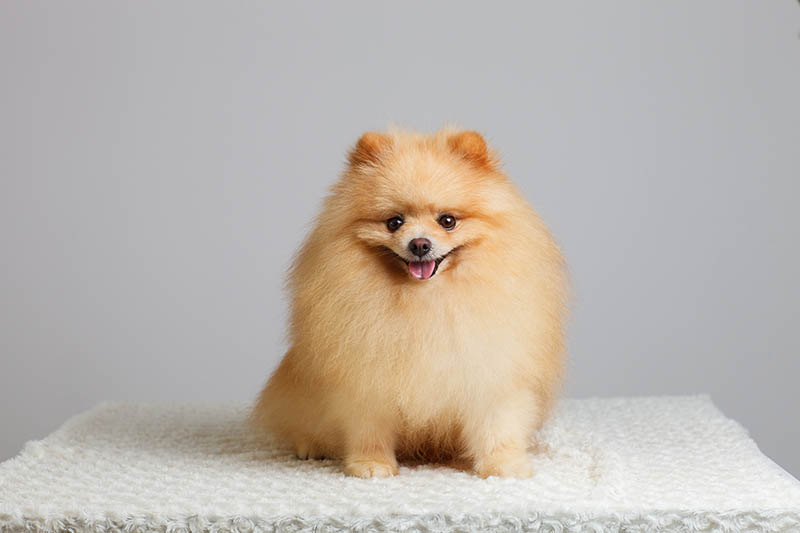
Grooming
Pomeranians require regular grooming to maintain their gorgeous coat. They have thick and dense fur that is best groomed by a professional. A groomer should also offer the service of a sanitary shave to remove fur around the genitals. Between their grooming appointments, these dogs need to be brushed several times a week and daily during shedding season. Long hair around the eyes and face should also be trimmed to prevent irritation or infection of the eyes.
Since Pomeranians are active, it is vital to keep their nails short and trimmed, and they will require daily teeth brushing, as they are more prone to dental disease due to their tiny mouths.
Suitable For:
A Pomeranian will be suitable for a family looking for a small and active lapdog that enjoys playtime and cuddles. They are ideal for a family with kids and pets and will also do well with a single owner looking for a companion. They need daily exercise but can adapt well to apartments. They require an owner who can keep up with their grooming and exercise needs. A Pom will also make a good watchdog and a great therapy dog. This breed can be quite vocal but is perfect for owners who are just as feisty.
- Affectionate lapdog
- Suitable for kids
- Intelligent
- Make great therapy dogs
- May be harder to house train
- High grooming needs

Which Breed Is Right for You?

If you are looking for a small, lovable companion, you can’t go wrong with the American Eskimo and Pomeranian. They are both friendly, outgoing, and intelligent, though the American Eskimo is a bit smarter than the Pomeranian. Both breeds are suited to apartment living and love families with kids. Both have moderate exercise needs, and their intelligence will require mentally stimulating activities.
While they both make excellent family pets, the Pomeranian may require more work and training. They have higher grooming needs, can be feisty, and may be more difficult to house-train. However, a Pom is also an ideal therapy dog and will love to spend their days curled up in your lap.
Either breed will bring you years of joy as long as they are well cared for, trained, and loved.
See also:
Featured Image Credit: (L) KA_Richer5171321, Shutterstock | (R) Jumpstory






